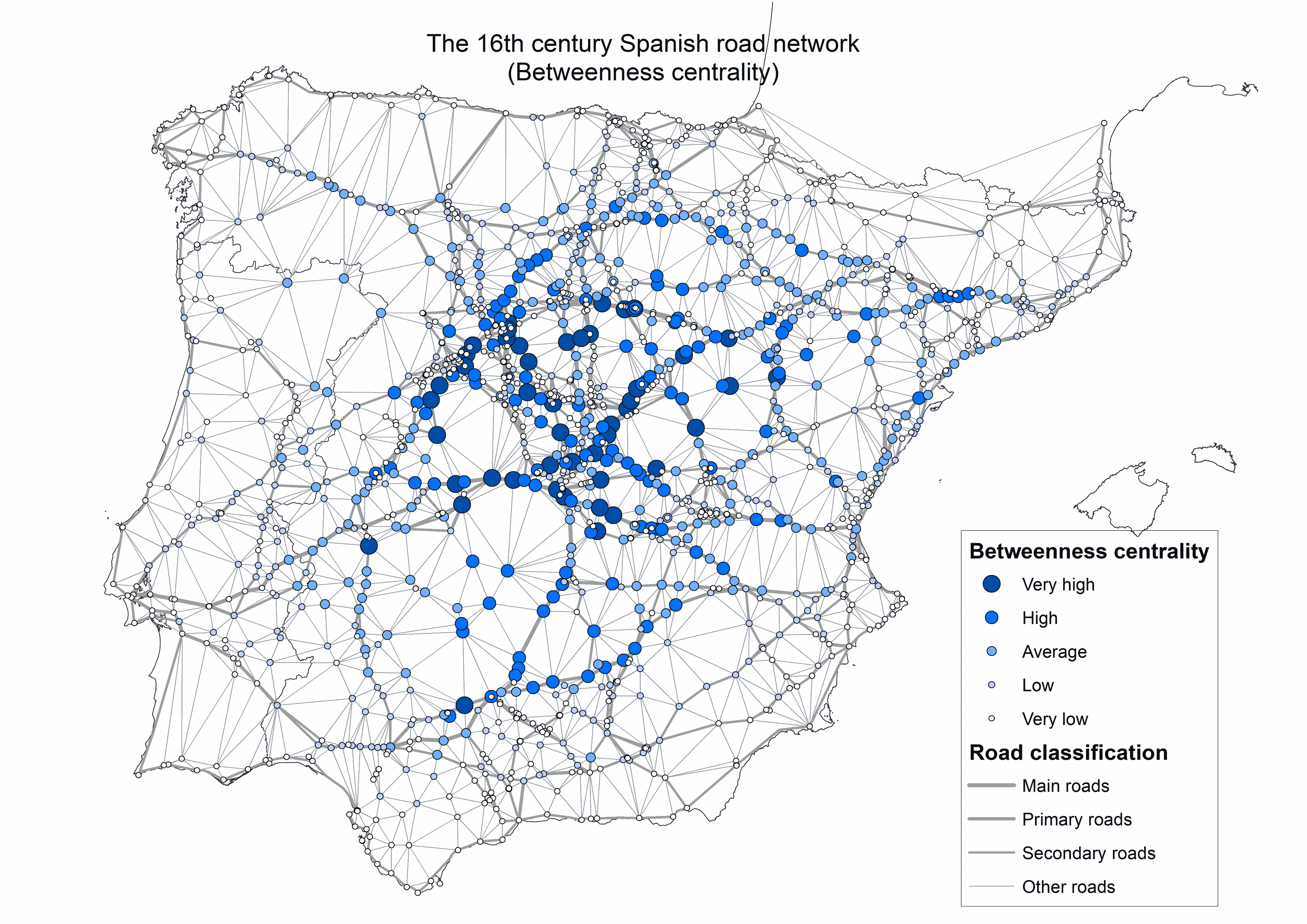The article «The choice of Madrid as the capital of Spain by Philip II in the light of the knowledge of his time» by Pablo-Martí, Alañón-Pardo, and Myro Sánchez, published in 2022, provides a comprehensive analysis of the factors influencing Philip II’s decision to designate Madrid as Spain’s capital in 1561. This decision is traditionally viewed as a complex blend of personal, political, and economic considerations. The paper offers a novel perspective by examining the choice in terms of Madrid’s intrinsic qualities and its transport network, challenging the notion that the decision lacked economic rationality.
During the Middle Ages and until the 16th century, the European kingdoms were typically governed by an itinerant court, a system that became inefficient and costly with the growth of the bureaucratic apparatus of modern states. The choice of Madrid as the permanent residence for the Spanish court, therefore, marked a significant shift from this traditional approach and has been a subject of vigorous academic, political, and social debate. The authors assert that Philip II’s decision was not arbitrary but meticulously planned, with Madrid being chosen for its potential to fulfill a far-reaching political and cultural program.
The research delves into the logistical aspects of the Spanish transport network in the 16th century, using primary sources and a novel methodology based on Delaunay triangulation. This approach allowed the authors to reconstruct the Spanish transport network with unprecedented accuracy. Two maps were prepared: one representing the real effects of Madrid’s choice based on the adjusted representation of the territory, and another ‘naïve’ map, constructed using 16th-century planimetry, to understand the decisions made by Philip II based on the geographical knowledge available at that time.
The paper employs the concept of complex networks, a relatively new area in scientific research, which applies mathematical principles to assess the role and importance of elements within a system, rather than in isolation. This approach provides insights into the commercial importance, accessibility, and impact of cities in the network, particularly in their potential role as capital city.
A central theme of the article is the evaluation of the transportation network in 16th-century Spain. The study challenges the traditional view that maritime transport was significantly superior to land transport. Instead, it presents evidence that, for Spain in the 16th century, land transport was often as convenient as maritime transport. This is supported by analyzing the centrality of intermediation, accessibility of main cities, and the development of the road network. The authors conclude that in cases where land transport is more efficient, most roads and traffic would be concentrated in the interior of the territory, which is consistent with the historical road network of Spain.
The study also examines the economic implications of Philip II’s decision, particularly the total transport costs associated with different locations. It highlights that being located by the sea could increase the transport costs of products from the hinterland. Consequently, the advantages of maritime transport were not as significant as traditionally believed, and in some cases, inland towns like Madrid had logistical advantages, particularly for certain products like wheat. This nuanced analysis provides a more comprehensive understanding of the economic rationale behind the choice of Madrid.
In summary, the paper provides a multidisciplinary perspective, integrating historical, economic, and complex systems analysis, to understand the decision-making process behind the choice of Madrid as the capital. It challenges traditional views by highlighting the economic and logistical rationale of the decision, backed by a detailed reconstruction of the 16th-century Spanish transport network and an analysis using the framework of complex networks. This approach not only sheds light on a significant historical decision but also demonstrates the potential of applying modern scientific methods to historical research.

Pablo-Martí F, Alañón-Pardo Á, Myro Sánchez R, Pablo-Martı F, Alañón-Pardo Á, Myro Sánchez R. The choice of Madrid as the capital of Spain by Philip II in the light of the knowledge of his time: A transport network perspective. PLoS One. 2022;17: 1–39. doi:10.1371/journal.pone.0269419
